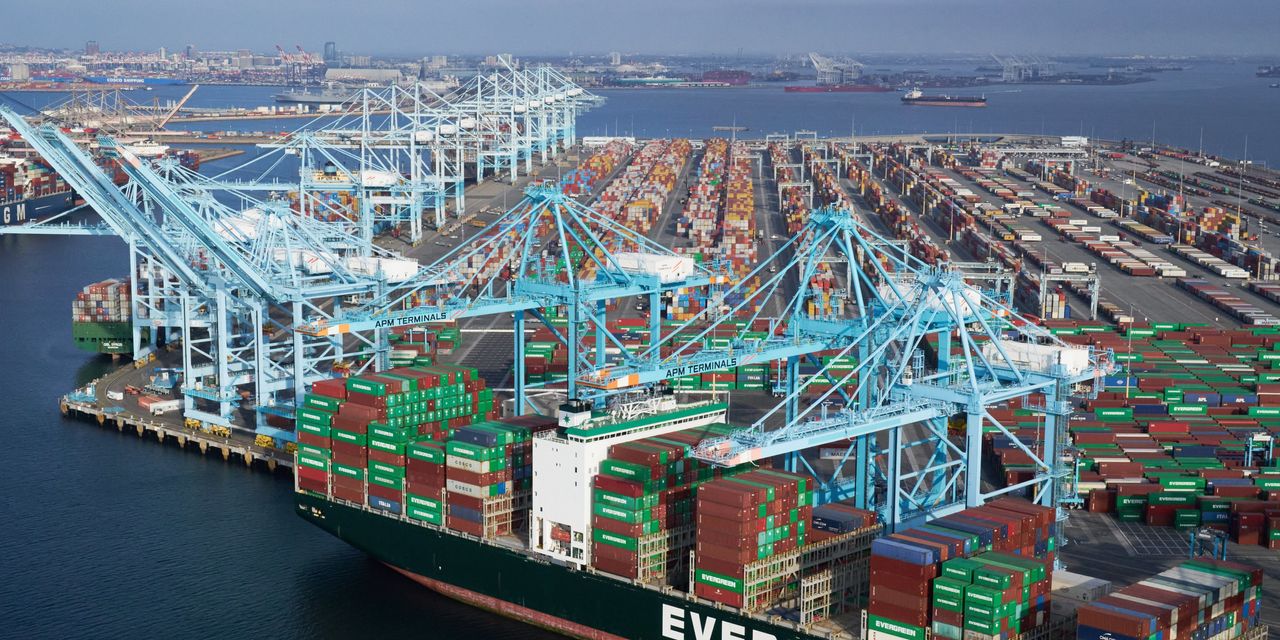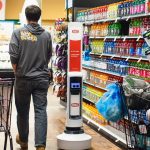
U.S. shippers struggling with supply-chain gridlock on the West Coast face new concerns in the coming year as dockworkers and marine terminals gird for talks on a new labor contract.
The private companies that operate port facilities from Washington state to Southern California are due to begin negotiations next year on a multiyear agreement with the union representing 22,400 dockworkers to replace the contract that expires in July 2022, raising the potential for new turmoil over bargaining that has been highly contentious in previous years.
The talks with the International Longshore and Warehouse Union, which happen about every six years, led to severe labor disruptions and shipping delays during the last cycle in 2014 and 2015. This time, the discussions expected to begin early next year will follow some of the worst seaport congestion in memory, as a pandemic-driven imports surge has overwhelmed container terminals and triggered record backlogs of container ships off the ports of Los Angeles and Long Beach.
“I don’t see an end in sight, especially with the ILWU contract negotiations next year,” said Caryn Blanc, managing partner at the Kearny, N.J.-based Triangle Group, a logistics firm that provides ocean shipping, trucking and warehousing services to major retailers.
The union this month rejected an offer by port terminal operators to delay negotiations until 2023. The employers wanted to extend the existing contract because fears over potential disruptions during the talks could worsen ongoing supply-chain bottlenecks.
ILWU International President Willie Adams said in a Tuesday statement that everyone should welcome the prospect of collective bargaining “as fundamental to the wellbeing of our ports rather than prognosticating disaster.”
Importers during earlier negotiating rounds brought goods in early and diverted cargo to Gulf and East Coast ports to mitigate potential supply-chain holdups. Their options this year are more limited because shipments already are severely backed up at seaports and across inland supply chains.
The continuing congestion leaves shippers in a bind. If they bring in cargo early or shift to alternate gateways they risk exacerbating the vessel backups. “If they wait and see if there is disruption, then what?” said Jonathan Gold, vice president for supply chain at the National Retail Federation. “They don’t want to be caught flat-footed.”
The ILWU contract covers about 15,400 full-time and 7,000 part-time dockworkers at ports stretching from Bellingham, Wash., to San Diego. Most workers aren’t directly employed by the terminals. The facilities order unionized workers for shifts each day or night based on needs.
The negotiations, which involve 70 employers at 29 ports, often grind on for months. Disagreements in past talks have led to shipping congestion. Employers have accused workers of slowdowns, while workers have claimed employers were mismanaging operations.
During the talks that began in 2014 and dragged into 2015, dozens of ships backed up off Southern California causing delays that cost individual retailers millions of dollars in increased costs and lost sales. In 2002, employers locked out workers for 10 days at one point before President George W. Bush invoked the Taft-Hartley Act covering oversight of union activities to open up ports.
The ILWU’s Mr. Adams, during an interview on a union-focused podcast called “The Docker” in August 2020, told dockworkers to save up money ahead of the forthcoming talks. ”There may be a battle in 2022,” he said. “Be prepared.”
In a recent statement to The Wall Street Journal, Mr. Adams said the union is focused on moving cargo as quickly as possible and protecting worker safety.
This year’s talks take place as ocean carriers, which run many of the West Coast’s port terminals, reap record profits. Denmark-based A.P. Moller-Maersk A/S, the shipping giant whose APM Terminals unit runs one of the largest container facilities at the Port of Los Angeles, delivered a $5.44 billion profit in the most recent quarter, nearly double its net result for the whole of 2020.
Jim McKenna, Chief Executive of the Pacific Maritime Association, which represents terminal operators in labor negotiations, said he expects talks to begin in early spring ahead of the contract’s expiration in July. He said the federal government usually doesn’t focus on the negotiations unless the risk of disruption increases after the contract runs out.
The groundwork for talks comes with the White House already facing growing pressure over supply-chain snarls that are delaying the delivery of retail and industrial goods and that economists partly blame for accelerating inflation.
“Pressure will come back on the parties to make sure we do whatever we humanly can to make sure nothing impacts a fragile supply chain,” said Mr. McKenna.
Automation and benefits are usually major issues during negotiations, Mr. McKenna said. The terminals gained authority to expand the use of technology in previous contracts while the union won increases in wages and pension benefits.
The average dockworker with more than five years’ full-time experience in 2019 earned almost $190,000. Several supervisors that year earned $500,000 or more. Benefit costs for most full-time dockworkers during the decade through 2019 increased to about $110,000 per worker from $82,500, according to PMA data.
Questions over how automation is rolled out may carry more heat in the coming year as terminal operators look for ways to accelerate the flow of containers. The Los Angeles and Long Beach ports have been swamped by the flood of imported boxes and the terminals were hampered in handling imports at times during the pandemic when Covid-19 outbreaks in the region cut into the labor force.
Right now, only two of the Southern California gateway complex’s 13 terminals use robotics extensively, the TraPac LLC Los Angeles terminal and Long Beach Container Terminal LLC.
Union officials oppose expanded use of automation, saying it is costly to install, inefficient and kills jobs. Mr. McKenna said he expects the issue to be “front and center” of the talks, especially at Los Angeles and Long Beach where a record 86 container ships were waiting offshore for berth space on Nov. 16.
The neighboring ports, which have little room for expansion, take in nearly 40% of the nation’s seaborne container imports. “Automation allows you to double your capacity in the footprint,” Mr. McKenna said.
David Kerendian, who owns Tower Textile Inc., a small Los Angeles.-based importer, says if labor talks turn ugly he is stuck because he can’t afford to ship through alternate ports. “If slowness kicks in, then forget it,” he said. “It will continue for the rest of 2022.”
Write to Paul Berger at [email protected]
Copyright ©2021 Dow Jones & Company, Inc. All Rights Reserved. 87990cbe856818d5eddac44c7b1cdeb8








